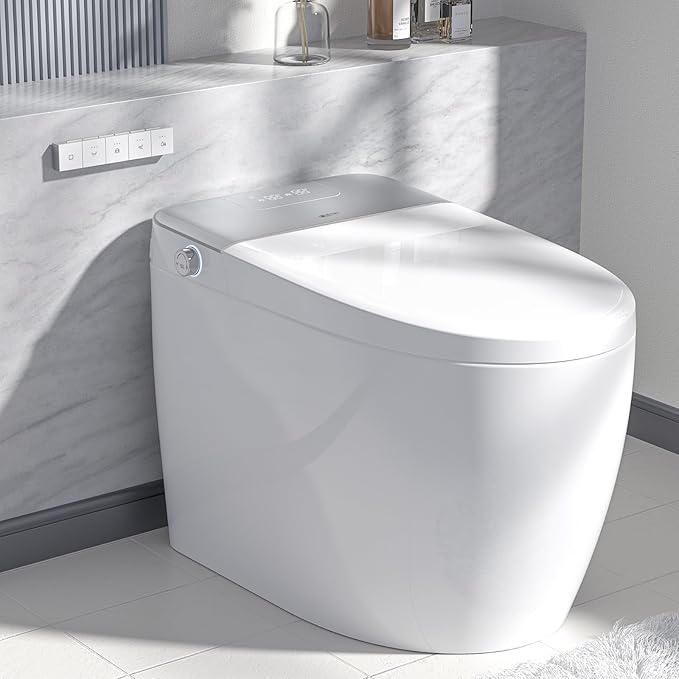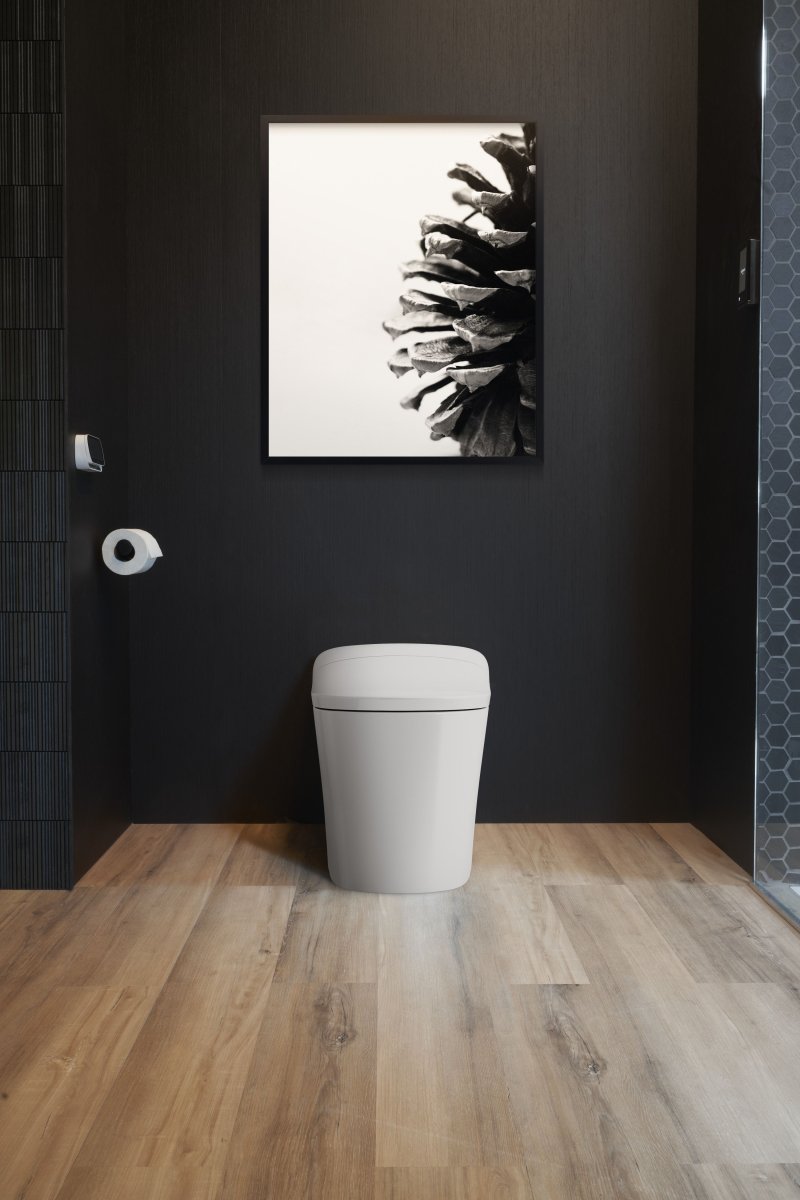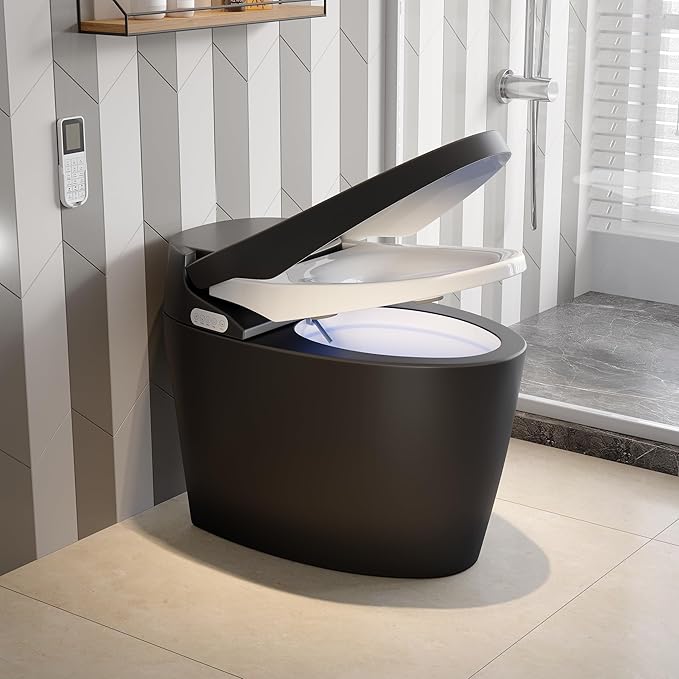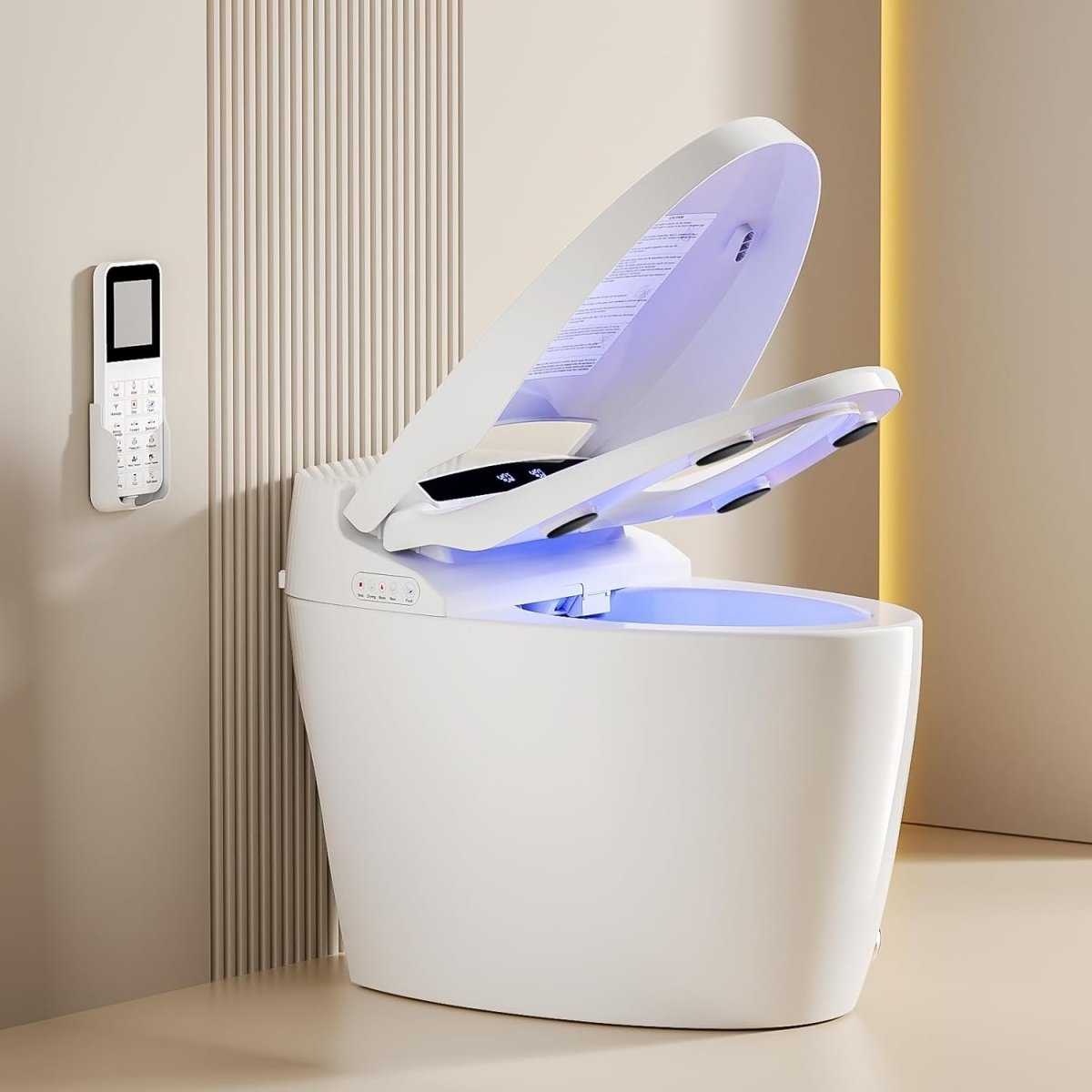We may earn revenue from the products available on this page and participate in affiliate programs. Learn More ›
Imagine a toilet that lights up when you walk into the bathroom, has a heated seat, and automatically flushes and cleans itself, all while saving energy. Well, such a product already exists and is gaining in popularity; smart toilets can do all these things and more.
Originating in Japan, these technologically advanced toilets offer aesthetic, hygienic, accessibility, and efficiency perks to homeowners. A range of customizable and automatic features managed by remote control, motion sensors, or voice demand help create an intuitive, luxurious experience.
Smart toilets are becoming more popular in the United States, and 60 percent of designers predict they will be the bathroom feature most requested by clients in the next 3 years, according to the National Kitchen and Bath Association’s 2024 trends report.
At Kohler, smart toilets are the fastest-growing category in their kitchen and bath portfolio, demonstrating consumer adoption, says Andrew Van Gordon, senior product manager of smart toilets at Kohler Co. Additionally, the smart toilet market industry is projected to grow from 8.2 billion dollars in 2022 to more than 22 billion dollars by 2030 globally.
Discover why smart toilets are more popular now than ever, their most attractive features, the benefits they offer, and what to consider before purchasing one.

Factors Fueling Smart Toilet Growth
Once considered a luxury item only, smart toilets are gaining traction with a wider range of customers with varying priorities. “Growing environmental awareness is one reason people are embracing smart toilets, especially models that monitor water usage and reduce waste, appealing to eco-conscious homeowners,” says Andrew Hancock, president of Gilman Heating, Cooling & Plumbing in Virginia. Water shortages due to droughts have sparked more concern about water conservation, adding to the interest in and need for sensor-activated flushing and dual-flush systems.
Van Gordon agrees: “With rising awareness of their environmental benefits, bidets and warm-air dryers are increasingly recognized as eco-friendly alternatives that reduce or eliminate toilet paper use while promoting cleanliness.”
In places with aging populations, smart toilets are appreciated for offering health-monitoring features and aiding mobility, making bathrooms safer and more functional, says Hancock. People are also more concerned with cleanliness and hygiene, possibly as a result of the pandemic. Finally, they are also “gaining traction in compact urban settings where every inch matters, as many models incorporate bidets, dryers, and even odor control in one streamlined design,” notes Hancock.

As technology progresses, so do the features embedded in smart toilets. Each model offers different options to consider.
Kohler’s smart toilets, for example, have a range of advanced features, including bidet cleansing functions with adjustable spray options and customizable water temperatures, warm-air drying, and heated seats. “Motion-activated lids and hands-free flushing make operation seamless, while intuitive controls allow for easy personalization,” says Van Gordon. “Many models also feature ambient lighting, built-in speakers, and air deodorizers to enhance relaxation and create a spa-like atmosphere.” There are even options for smartphone app integration and remote controls to create a highly customizable experience.
Other possible features of smart toilets include:
- Motion sensor LED lighting
- Multiple cleaning modes
- Hot/cold massage
- Low-battery sensors
- Custom water pressure settings
- Water-savings adjustment
- Low-water level sensors for overflow protection
Common Smart Toilet Features

How Smart Toilets Can Make Your Life Better
Smart toilets are becoming more sought-after because of the benefits they can provide to people’s homes and daily routines. Here are the main benefits of installing a smart toilet in your home.
Sustainability: Smart toilets provide data on water usage, which helps users track their environmental impact and make informed choices about their overall water consumption, according to Hancock. Also, they use low-flush technology to reduce water consumption, and some models eliminate the need for toilet paper.
Comfort: Warm air dryers, heated seats, and adjustable water temperature and pressure are some of the ways smart toilets can improve the bathroom experience.
Hygiene: “Things like hands-free flushing, self-cleaning bowls, and surfaces with antibacterial coating make smart toilets incredibly hygienic—less contact means fewer germs,” says Izabela Tokarski, co-founder of Kabela & Co in Westchester County, New York.
Convenience: Voice-demand technology can easily operate the toilet, such as when to flush or increase the air dryer temperature.
Safety and accessibility: Smart toilets can be a proactive choice for homes with elderly or disabled residents. “Features like voice commands and night lights make them a supportive option for those needing extra safety and independence,” says Hancock. Automatic flushing and adjustable heights are also helpful for those with mobility challenges.
Save space: Typically more compact than regular toilets, smart models have a tankless design and save space.
Potential Drawbacks of Smart Toilets
Smart toilets usually cost from just under $1,000 to around $6,000, so it’s important to carefully evaluate if the purchase is right for you vs. other types of toilets. Besides being significantly more expensive than standard models, there are other concerns to keep in mind.
Check if the model requires any special installation or plumbing considerations. “Most smart toilets need electrical outlets nearby for features like heated seats or bidet functions, so clarify these details with your installer on where the electrical and water supply access will need to be located and available,” says Van Gordon.
There are also maintenance and repair concerns, which can be costly since they can require hiring specialized technicians. “High-tech components in smart toilets are susceptible to the effects of moisture, so in bathrooms without sufficient ventilation, the lifespan of electronics may be reduced, leading to unexpected repair costs,” says Hancock. He also warns that “in areas with hard water, advanced sensors and cleaning systems can clog or malfunction more quickly, requiring specialized maintenance or filters that may not be standard, adding to upkeep costs.”
Finally, some people are worried about privacy. “With integrated sensors and connectivity, some smart toilets collect data on use patterns. While intended for convenience, this can be a potential privacy concern,” says Hancock.


